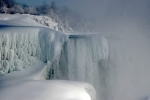startanew wrote:Started APAP last December – initially numbers looked good and overall I am doing better than I was last year.. but the adjustment has not been easy and I am still struggling with finding the right combination of mask, pressure, equipment, and behavior to get really restful sleep.
Generally getting 3-5 nights of reasonable numbers followed 1-4 nights with a AHIs 8 -20 which usually involve clusters of centrals running for 15 minutes to an hour. One those days I wake up groggy, fuzzy headed, and headachy.
Does kinda look like emergent central apnea.
startanew wrote:A couple months ago I posted on an increase in Central/Clear Airways that seemed to coincide with stopping use of chinstrap in late February (see chinstraps and centrals). In early April – I started using the chin-strap again and you can see that the AHI especially CAs has not gone back down.
I’m beginning to think it has more to do with finally getting to REM…since most of the clusters are when I am asleep and 3-4 hours in. The smaller late morning stuff is prob Sleep Wake Junk.
Talked to sleep team/RT shared my data a month or so ago about the high readings and my ongoing issues with getting and staying asleep with APAP. Suggested trying a new mask, more work on sleep hygiene (which is pretty decent) and perhaps just seeing if the issue would resolve.
Talked to my primary care doc 2-3 weeks ago – who suggested trying a low dose of trazadone (50 mg) – started the last week of May. While has helped in the sleep consolidation department – but CA’s are still up. Thinking about tapering back off.....o
Will be trying Airfit P10 starting this weekend to see if that makes a difference. Haven’t been able to isolate other behavior that seems to be triggering the CA Clusters, looked at things like OTC meds, late exercise, eating out (MSG) etc .
Leaks seem to be under control. Some of the clusters but not all seem be triggered by pressure. So I’m thinking it may be time to wingding (smile) as current pressure settings now set at 5 – 20 CM the low end which has felt close Suggestions on a better range to start with welcome.
Any other thoughts on how to tame this?
Other pertinent details 57 yrs, 6 ft, 215 lbs, non drinker (recovery 25 yrs) non- smoker, 30-90 minutes of exercise daily, 3-6 cups coffee before 11 AM (need to reduce), limited dairy, gluten and sugar. Trazadone – but no other meds
Thanks again to all the folks here both conventional and unconventional.
So you get a CPAP machine, and it works!! So what happens inside your body? Are things likely to change?
I used to think that a tracheostomy was indeed “the ultimate cure” for sleep apnea. But as they related in a recent commentary in SLEEP[1] that is not the case:
“...central apnea following tracheostomy is well described in severe OSA patients, perhaps suggesting that the mechanism underlying baseline OSA may be a critical variable.[10,11]”
So perhaps CPAP has “un-masked” the real problem (that was kinda fun).
Most people think of sleep apnea only as obstructive sleep apnea. However there is a much broader spectrum of causes of apnea. As well the point at which arousal occurs with an event may well change. They are beginning to sort it out[2,3].
When you breath more than you should you also wash out more carbon dioxide (CO2) than you should. In the context of hyopcapnic (hypo=low capnic=CO2) central apnea as the CO2 level decreases it goes beyond the “apneic threshold” and so a hypocapnic central apnea is caused to occur.
Often CPAP tends to exacerbate central apnea as the pressure tends to cause you to use a bit more air and so tends to cause CPAP emergent central apnea often known as Complex Sleep Apnea (CompSAS).
I am suspicious that this results from two of the nonanatomic causes of sleep apnea[2,3] ganging up on you as you use CPAP. High respiratory control system gain working with low arousal threshold could mean that the times of more breathing brought forth by the respiratory gain issues would cause respiratory effort above your low arousal threshold and fracture your sleep with excessive arousals. In a recent comparison study looking at how CompSAS responds to treatment by ASV vs CPAP[6] they found that at the end of 90 days both arms were essentially equal in the number of arousals with over twenty per hour still in play. Both arms had excessive daytime sleepiness affected only a little by treatment. ASV however did well to severely reduce the hypocapnic central events so probably does better protect the brain.
The most helpful thing I have found with this is to reduce the stress in my life. Stress for me definitely raises my respiratory control system gain!
When dealing with unstable breathing with CPAP I have found it very helpful to spend some quality time with the machine during the daytime. Some in bed learning to breath quietly (at rest in bed, little real air need). Some with mild distraction such as a book, music, or lite TV.
I and others[5] have found moving vitamin D3 into its active range helpful.
And during my journey away from sleep apnea I have found that I did not know how to eat well or move well. Oh I thought I did. If you would have asked me I would have told you I did. But I learned that I did not! My three years with a dietitian helped start me on my continuing life long journey to eat well. I still strive toward the basic goal of 10,000 steps a day (about 4.5 miles for me - running about 90% at this time) and do intend to use more personal trainer time as I pursue an active lifestyle. Lately I have been thinking that running, which is known to help with brain development, might well be worth the risks to my knees at my advanced age. By eating well and moving well I hope to promote whole body metabolic health and I can say it does appear to help with my tendency to have centrals emerge as I use CPAP.
In terms of an unconventional suggestion – well how about buddhist meditation mindfulness of breathing applied as you use CPAP. I have been meaning to try this.
Also I have found EERS[4] helpful to deal with this issue.
hth
[1] Orr J, Javaheri S, Malhotra A. Comparative effectiveness research in complex sleep apnea. SLEEP 2014;37(5):833-834
[2] Danny J. Eckert, David P. White, Amy S. Jordan, Atul Malhotra, and Andrew Wellman "Defining Phenotypic Causes of Obstructive Sleep Apnea. Identification of Novel Therapeutic Targets", American Journal of Respiratory and Critical Care Medicine, Vol. 188, No. 8 (2013), pp. 996-1004. doi: 10.1164/rccm.201303-0448OC
[3] Sairam Parthasarathy M.D., Emergence of Obstructive Sleep Apnea Phenotyping. From Weak to Strong! American Journal of Respitory and Critical Care Medicine VOL 188 2013
-- critical closing pressure [Pcrit] - Arousal Threshold - ventilatory control Loop gain - and genioglossal Muscle responsiveness. Pcrit, Loop, Arousal, Muscle (PALM)--
[4]: Gilmartin G, McGeehan B, Vigneault K, Daly RW, Manento M, Weiss JW, Thomas RJ.
Treatment of positive airway pressure treatment-associated respiratory instability with enhanced expiratory rebreathing space (EERS).
Source: J Clin Sleep Med. 2010 Dec 15;6(6):529-38. Division of Pulmonary, Critical Care and Sleep Medicine, Beth Israel Deaconess Medical Center, Boston, MA, USA.
Link:
http://www.ncbi.nlm.nih.gov/pubmed/21206741
[5]: Those who are working with the D3 hormone (A.K.A. Vitamin D3) (e.g. Dr. Stasha Gominak, Michael F. Holick, Ph.D., M.D., Vitamin D Council) seem to be finding that the very low side of the “normal” range of 30-100 ng/L produces a range of symptoms including OSA, pain, and infection. All believe that a level lower than 50 ng/mL is not good and Dr. Stasha Gominak recommends 60-80 ng/mL for good health. It would probably be wise to check your vitamin D3 levels. See “The Vitamin D Council” for assay details.
[6] Morgenthaler TI, Kuzniar TJ, Wolfe LF, Willes L, McLain WC, Goldberg R. The complex sleep apnea resolution study: a prospective randomized controlled trial of continuous positive airway pressure versus adaptive servoventilation therapy. SLEEP 2014;37(5):927-934 Related article (commentary):833
[10] Fletcher EC, author. Recurrence of sleep apnea syndrome following tracheostomy. A shift from obstructive to central apnea. Chest. 1989;96:206-9
[11] Guilleminault C, Simmons FB, Motta J, et al., authors. Obstructive sleep apnea syndrome and tracheostomy. Long term follow-up experience. Arch Intern Med. 1981;141:985-8















